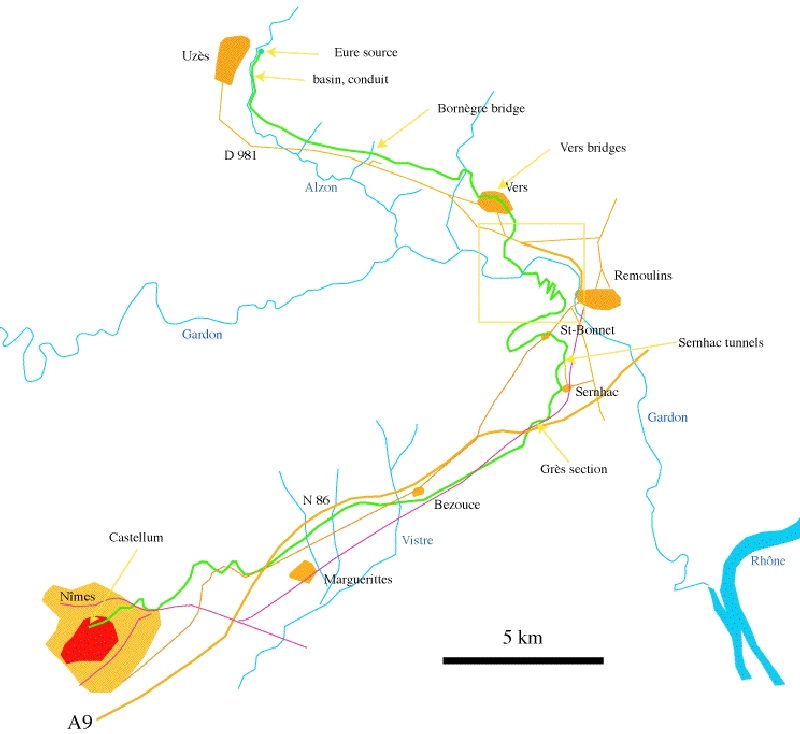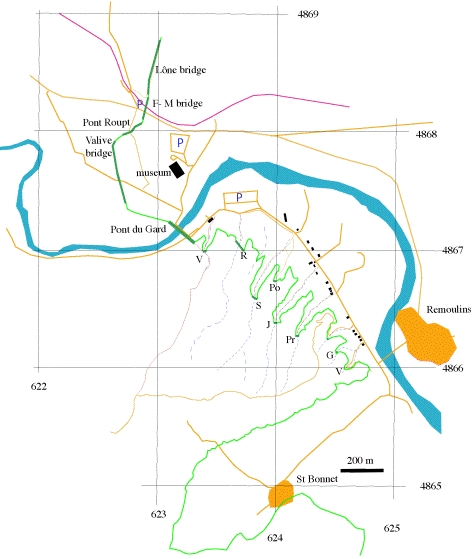| Recommended literature :
|
- Hauck, G. (1988): The aqueduct of Nemausus. McFarland.
- Fiches, J-L, Paillet, J-L. (1988): Nîmes. in: Die Wasserversorgung antiker Städte 3. 207-214. von Zabern.
- Granier, J. (1990): The Pont du Gard. Monaco.
- Fabre, G, Fiches, J-L, Leveau, Ph, Paillet, J-L. (1992): The Pont du Gard. Water and the Roman town. Presses du CNRS
- O'Connor, C. (1993): Roman bridges. Cambridge University Press
- Larnac, C, Garrigue, F. (1999): L'aqueduc du Pont du Gard. Les presses du Languedoc
- Darde, D. (2005): Nîmes antique. Monum.
- C.K. Rasmussen (2017): A comparative analysis of Roman water systems in Pompeii and Nimes (Master thesis, on the web)
|



